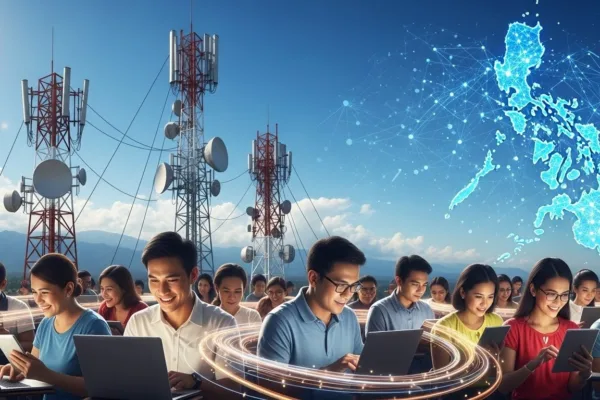
by Alexey Navolokin, General Manager, Asia Pacific Region at AMD
Artificial Intelligence (AI) is reshaping how we live, work, and solve some of the Philippines’ most pressing issues, from boosting agricultural productivity and improving healthcare diagnostics to enhancing financial inclusion in rural areas.
The Philippine government, through initiatives like the National AI Strategy Roadmap 2.0 (NAISR 2.0), is actively positioning the country as a regional artificial intelligence powerhouse.
While data centers are an essential component, they are only part of a broader, more holistic strategy that must incorporate a distributed computing approach, including AI-capable PCs and edge devices.
The whole is greater than the sum of its parts. Artificial intelligence’s transformative potential is not limited to large urban centers. In a geographically diverse archipelago like the Philippines, with its archipelagic nature and many geographically isolated and disadvantaged areas (GIDAs), a centralized strategy presents significant challenges.
Many rural communities still struggle with poor or unreliable internet connectivity. An artificial intelligence-powered farming app, for example, might offer data-driven recommendations to farmers. Still, its effectiveness is severely limited if it requires a constant, high-speed connection to a data center hundreds of kilometers away.
A growing digital divide

This digital divide is a real and growing concern, with significant disparities in internet access between urban and rural areas.
Furthermore, a data center-only strategy has sustainability and efficiency implications. The demand for data centers is growing rapidly, with the Philippine data center market expected to reach 1.3 thousand MW by 2030.
This growth, however, comes with a substantial increase in electricity consumption. Given the country’s reliance on fossil fuels, a heavy dependence on large data centers could lead to soaring energy costs and a serious environmental impact.
To make artificial intelligence truly inclusive and sustainable, the Philippines needs a balanced approach. This means running applications locally on devices such as AI PCs or specialized edge devices can process data at the source.
In a distributed compute approach for a nation, this means that data centers are used as centralized hubs for training large artificial intelligence models, storing vast datasets, and running high-complexity analytics. They continue to serve as the backbone of national and enterprise-level artificial intelligence workloads.
Those equipped with Neural Processing Units (NPUs) are used by professionals, researchers, and advanced users for local inference for on-device artificial intelligence tasks, development, and some training. Then you have the edge devices in the periphery – like those used in smart factories, farms, or for disaster resilience – handling real-time inference and automation.

Advantages of distributed AI PCs model:
- Faster responsiveness: Local processing eliminates the latency of transmitting data back and forth to a distant data center.
- Energy efficiency: Artificial intelligence-capable PCs and edge devices consume less energy than large data centers, reducing the overall carbon footprint.
- Accessibility: Artificial intelligence applications can operate anywhere, anytime, without the need for high-speed internet.
- Affordability: Reducing reliance on expensive data center resources can lower the operational costs for both businesses and end-users.
As the Philippines expands its digital infrastructure, it is critical to build a foundation that is accessible and sustainable for all.
A distributed compute approach, which complements rather than replaces data centers, is the strategic path forward to ensure that AI becomes a catalyst for inclusive innovation and economic growth throughout the entire archipelago.
About Alexey Navolokin
Alexey Navolokin is the General Manager, Asia Pacific Region at AMD. He has been a part of the company since 2020. In his role, Alexey leads AMD’s Commercial Sales organization in the APAC region with teams across the different business verticals – including Data Centre/Server, Commercial Client PC, Professional Graphics, and Embedded businesses – to drive revenue and strategic engagements with end-user customers, OEMs/ODMs, and channel partners by selling Cloud Solutions across multiple enterprise verticals.
By driving strategic engagements with top enterprise customers, OEMs, and channel partners, Alexey has his finger on the pulse of the market. He is an expert on how AI-powered hardware can solve practical business problems, enhance productivity, and drive innovation, making him a leading voice on the future of work in the era of artificial intelligence.
—
Resources:
“Philippines: Powered by AI – The Philippines’ National AI Strategy Roadmap 2.0,” Gorriceta, June 17, 2025
“Upgrading Philippine internet for faster and inclusive growth,” World Bank, April 4, 2024
“Philippines Data Center Market Size & Share Analysis – Growth Trends & Forecasts up to 2030,” Mordor Intelligence, 2024








